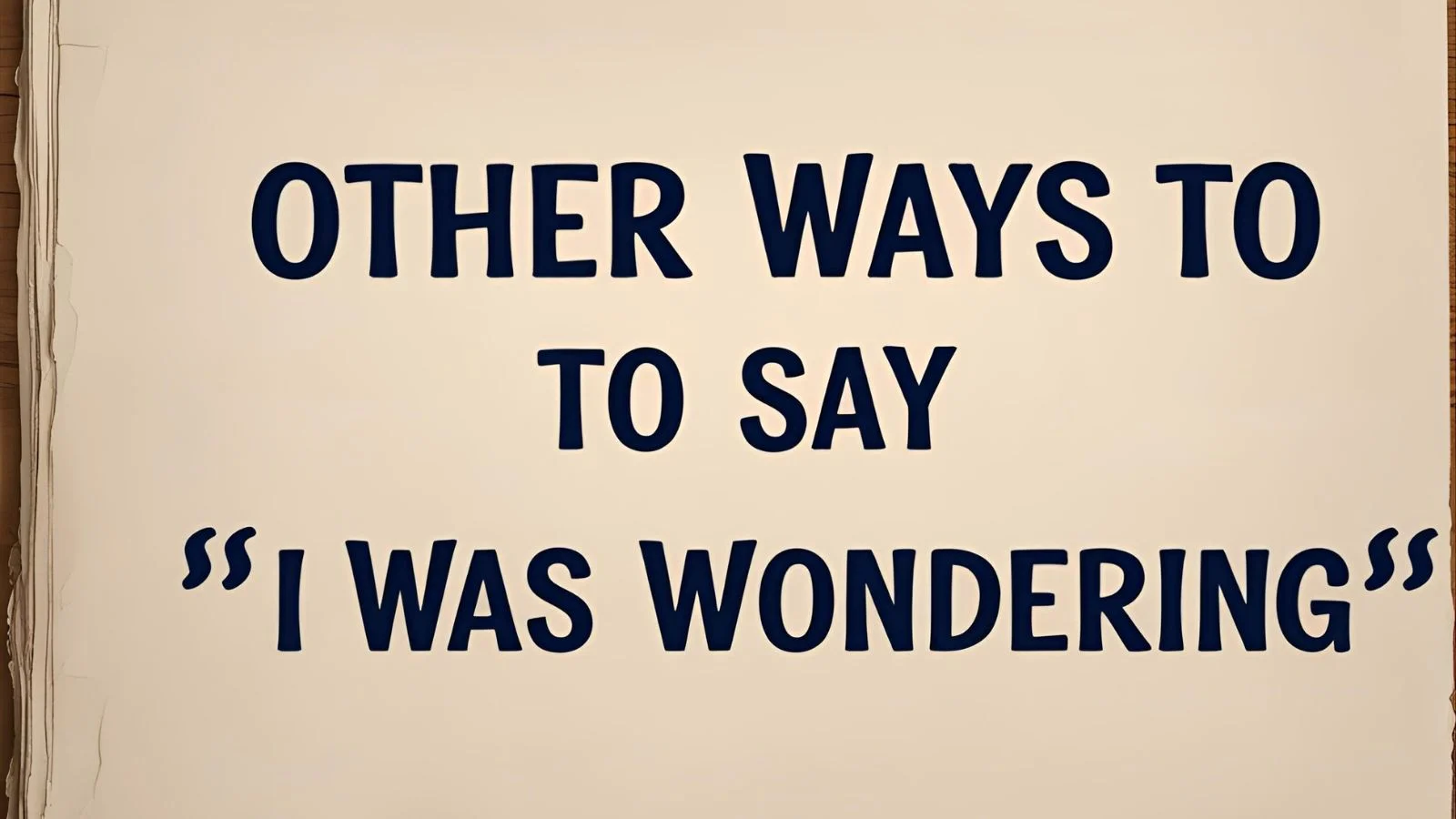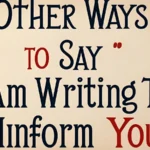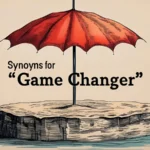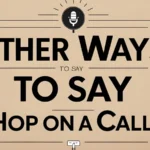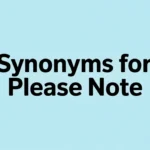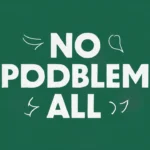The phrase “I was wondering” is a common way to express curiosity or make polite inquiries. While it’s useful, using the same phrase repeatedly can sound repetitive or less engaging. Expanding your vocabulary with alternative expressions can help you communicate more effectively, whether in casual conversations, professional emails, or creative writing. Other Ways to Say “I Was Wondering”.
Different ways to say “I was wondering” can add a touch of politeness, assertiveness, or friendliness, depending on the situation. Whether you are asking a colleague for assistance, requesting information from a stranger, or simply expressing curiosity, choosing the right words can make a big difference.
In this article, we will explore fifteen alternative ways to say “I was wondering,” each with its own subtle nuance. These phrases will help you sound more professional, engaging, and varied in your communication. Let’s dive into different ways to rephrase this common expression effectively.
Could You Tell Me…
When you want to ask for information in a polite yet direct way, “Could you tell me…” is a great alternative to “I was wondering.” This phrase works well in both casual and formal settings.
For example, instead of saying, “I was wondering what time the meeting starts,” you could say, “Could you tell me what time the meeting starts?” This phrasing makes the request clearer and more professional.
Additionally, this alternative makes your question more engaging. It prompts the listener to respond directly while still sounding polite. If you are writing an email, this phrase works perfectly when requesting information from someone you don’t know well.
Using “Could you tell me…” also helps avoid sounding hesitant. Instead of wondering aloud, this phrase makes it sound like you expect an answer, making communication smoother and more effective.
Read More: Synonyms for “Game Changer”
I’d Like to Know…
If you want to sound direct but still polite, “I’d like to know…” is an excellent way to ask a question without using “I was wondering.” This phrase expresses curiosity in a way that is clear and to the point.
For instance, instead of saying, “I was wondering if you have the latest report,” you could say, “I’d like to know if you have the latest report.” This makes the request more confident and professional.
This phrase works well in business emails, academic inquiries, or even friendly conversations. It shows that you have a genuine interest in getting an answer. Additionally, it keeps the conversation flowing by making your request straightforward.
By using “I’d like to know,” you show confidence in your communication while keeping a polite and engaging tone. This small change in phrasing can make a big impact on how your message is received.
Do You Happen to Know…
“Do you happen to know…” is a softer, more indirect way of asking a question. It makes your inquiry sound more polite and less demanding, which is especially useful in casual conversations or when speaking to someone you don’t know well.
For example, instead of saying, “I was wondering if the restaurant is open late,” you could say, “Do you happen to know if the restaurant is open late?” This phrasing sounds more natural and friendly.
This phrase is great when you are unsure if the person has the information you need. It allows them to answer without feeling pressured. You can use it in both spoken and written communication, making it a versatile option.
Using “Do you happen to know” makes your inquiry feel lighter and more conversational while still being effective. It’s a great way to keep communication smooth and polite.
I’m Curious About…
If you want to express genuine interest in something, “I’m curious about…” is a great alternative to “I was wondering.” This phrase sounds friendly and engaging, making it ideal for both professional and personal conversations.
For instance, instead of saying, “I was wondering how this process works,” you could say, “I’m curious about how this process works.” This phrasing sounds more natural and enthusiastic.
Using “I’m curious about” helps create a more engaging discussion. It invites the listener to share information in a way that feels natural rather than like a formal request. It’s a great choice when you want to express interest without sounding too direct.
This phrase works well in meetings, emails, and even casual chats. It makes your curiosity feel genuine and encourages open conversation.
May I Ask…
“May I ask…” is a polite and formal way to inquire about something. It is commonly used in professional settings, interviews, or when addressing someone with respect. This phrase ensures that your question sounds courteous rather than intrusive.
For example, instead of saying, “I was wondering if you could help me with this project,” you could say, “May I ask if you could help me with this project?” This approach makes the request sound more professional and respectful.
This phrase is especially useful in emails, interviews, or conversations with higher authorities. It conveys politeness while maintaining clarity. Additionally, it allows the listener to choose whether to answer, making the conversation more comfortable.
Using “May I ask…” is a great way to ensure your communication remains polite, respectful, and professional. It’s a simple yet effective way to ask questions without sounding too direct.
Would It Be Possible…
“Would it be possible…” is a great alternative to “I was wondering” when making polite requests. This phrase is useful in professional and formal communication, especially when asking for a favor or clarification.
For example, instead of saying, “I was wondering if you could send me the updated file,” you could say, “Would it be possible for you to send me the updated file?” This phrasing sounds more courteous and professional.
This alternative works well in business emails, customer service requests, and workplace conversations. It allows you to make a request without seeming too demanding. The phrase also provides flexibility, as the listener can choose how to respond.
Using “Would it be possible” makes your inquiry sound softer while keeping it effective. It’s an excellent choice when you want to ensure a polite and professional tone.
Can You Clarify…
“Can you clarify…” is a direct yet polite way to ask for more details. This phrase is especially useful in workplace communication, academic settings, and customer service interactions.
For example, instead of saying, “I was wondering what you meant by that,” you could say, “Can you clarify what you meant by that?” This phrasing ensures that your request sounds confident and professional.
This phrase helps avoid misunderstandings while keeping the conversation smooth. It signals that you need more information without sounding critical or impatient. It also encourages the speaker to elaborate, making it a great tool for effective communication.
Using “Can you clarify” makes your question clear and purposeful. It ensures that you get the necessary details without sounding uncertain or hesitant.
I’d Appreciate It If You Could…
“I’d appreciate it if you could…” is a great way to phrase a polite request while expressing gratitude in advance. This phrase works well in both professional and casual settings, making your question sound warm and considerate.
For example, instead of saying, “I was wondering if you could send me the report,” you could say, “I’d appreciate it if you could send me the report.” This phrasing adds a touch of politeness and appreciation.
This phrase is particularly useful in emails, customer service interactions, and workplace requests. It ensures that your message comes across as respectful while still being clear.
Using “I’d appreciate it if you could” helps build positive communication and encourages a helpful response. It’s an effective way to maintain polite and professional interactions.
Is There Any Chance…
“Is there any chance…” is a friendly and informal way to ask for something or seek information. This phrase works well in casual conversations, workplace discussions, or friendly requests.
For example, instead of saying, “I was wondering if you could cover my shift,” you could say, “Is there any chance you could cover my shift?” This phrasing makes the request sound more approachable and natural.
This alternative is great for situations where you don’t want to sound too formal but still need to make a request. It allows the listener to consider your question without feeling pressured.
Using “Is there any chance” helps make your question sound friendly and open-ended. It’s a great way to ask for help while keeping the conversation relaxed and engaging.
Do You Mind If I Ask…
“Do you mind if I ask…” is a polite and considerate way to introduce a question. This phrase is useful when you want to be respectful of the other person’s time or privacy.
For example, instead of saying, “I was wondering how you got started in this field,” you could say, “Do you mind if I ask how you got started in this field?” This phrasing makes your question sound more courteous and thoughtful.
I’m Interested in Knowing…
“I’m interested in knowing…” is a great way to express curiosity in a professional yet engaging manner. This phrase works well when you want to learn more about a topic without sounding too demanding.
For example, instead of saying, “I was wondering how the new system works,” you could say, “I’m interested in knowing how the new system works.” This phrasing makes your question sound more natural and thoughtful.
This alternative works particularly well in business meetings, academic discussions, and networking conversations. It signals that you are genuinely engaged in the topic and eager to learn.
Using “I’m interested in knowing” makes your question sound more open-ended and inviting. It encourages discussion and helps foster a deeper conversation.
Could I Get Some Information On…
“Could I get some information on…” is a polite and direct way to request details about a specific topic. This phrase works well in professional emails, customer inquiries, and workplace discussions.
For example, instead of saying, “I was wondering about your pricing plans,” you could say, “Could I get some information on your pricing plans?” This phrasing makes the request sound more professional and specific.
This alternative is useful when you need clear and detailed answers. It ensures that your request is straightforward while keeping the tone polite.
Using “Could I get some information on” makes your inquiry more structured and easy to understand. It’s an excellent choice when you need precise details.
Have You Heard…
“Have you heard…” is a more conversational way to introduce a question or discussion topic. This phrase works well in informal conversations, networking events, and friendly discussions.
For example, instead of saying, “I was wondering if there are any updates on the project,” you could say, “Have you heard any updates on the project?” This phrasing sounds more engaging and natural.
This alternative is great for situations where you want to keep the conversation light and friendly. It allows the other person to share information without feeling like they are being interrogated.
Using “Have you heard” makes your question feel more relaxed and easygoing. It’s perfect for casual settings where you want to spark a discussion.
Just Out of Curiosity…
“Just out of curiosity…” is a friendly way to ask a question without making it sound too serious. This phrase works well when you want to make an inquiry in a lighthearted manner.
For example, instead of saying, “I was wondering why you chose this career,” you could say, “Just out of curiosity, why did you choose this career?” This phrasing makes the question feel more relaxed and engaging.
This alternative is perfect for conversations where you want to show interest without pressuring the other person to answer. It keeps the discussion open-ended and natural.
Using “Just out of curiosity” helps create a comfortable and friendly tone. It encourages others to share insights without feeling obligated to respond formally.
Would You Happen to Know…
“Would you happen to know…” is a soft and polite way to ask for information. This phrase works well in situations where you don’t want to sound too direct or demanding.
For example, instead of saying, “I was wondering where the nearest bus stop is,” you could say, “Would you happen to know where the nearest bus stop is?” This phrasing sounds more courteous and considerate.
This alternative is great for both casual and professional conversations. It ensures that your question sounds polite while still being clear.
Using “Would you happen to know” makes your inquiry feel more natural and respectful. It’s a great way to ask for information in a way that encourages a positive response.
Now that we have covered 15 alternative ways to say “I was wondering,” would you like me to add the FAQs and conclusion to wrap up the article?
I’m Curious About…
“I’m curious about…” is a great way to introduce a question in a friendly and engaging manner. This phrase works well in casual conversations, professional discussions, and learning environments.
For example, instead of saying, “I was wondering how you got started in your career,” you could say, “I’m curious about how you got started in your career.” This makes the question sound more open-ended and engaging.
This alternative is especially useful when you want to express genuine interest in a topic. It encourages the other person to share their thoughts or experiences without making the question feel too formal or demanding.
Using “I’m curious about” makes your question feel more natural and inviting. It helps foster meaningful discussions and encourages others to open up.
Can You Tell Me More About…
“Can you tell me more about…” is a direct yet polite way to ask for additional details. This phrase is useful in professional settings, interviews, and conversations where you want to dive deeper into a topic.
For example, instead of saying, “I was wondering how this process works,” you could say, “Can you tell me more about how this process works?” This phrasing makes your question sound more engaging and welcoming.
This alternative works well in discussions where you need clarification or further explanation. It allows the other person to expand on their point without feeling pressured.
Using “Can you tell me more about” helps create a more interactive and engaging conversation. It shows that you are genuinely interested in learning more.
I’d Like to Know…
“I’d like to know…” is a confident and professional way to ask a question. This phrase works well in both formal and informal conversations where you want to make a polite inquiry.
For example, instead of saying, “I was wondering when the deadline is,” you could say, “I’d like to know when the deadline is.” This phrasing makes your request sound more direct yet polite.
This alternative is great for workplace conversations, academic discussions, and business emails. It ensures that your question is clear while maintaining a respectful tone.
Using “I’d like to know” makes your communication more assertive and professional. It helps you get straight to the point while keeping the conversation friendly.
Could You Help Me Understand…
“Could you help me understand…” is a thoughtful and respectful way to request clarification. This phrase works well in learning environments, workplace discussions, and customer service interactions.
For example, instead of saying, “I was wondering what this term means,” you could say, “Could you help me understand what this term means?” This phrasing makes your question sound more considerate and open-minded.
This alternative is especially useful when discussing complex topics. It encourages the other person to explain in a way that makes it easier for you to grasp.
Using “Could you help me understand” makes your inquiry sound more collaborative and respectful. It fosters a positive and productive conversation.
Is It Possible to…
“Is it possible to…” is a polite way to introduce a request or question. This phrase is commonly used in professional emails, workplace discussions, and customer service inquiries.
For example, instead of saying, “I was wondering if I could reschedule the meeting,” you could say, “Is it possible to reschedule the meeting?” This phrasing makes your request sound more diplomatic and professional.
This alternative is great for situations where you want to ensure that your question sounds respectful and non-demanding. It allows the other person to consider your request without feeling pressured.
Using “Is it possible to” helps maintain a polite and professional tone. It ensures that your question is well-received and encourages a positive response.
Conclusion
Finding different ways to say “I was wondering” can make your communication more engaging, professional, and natural. Whether you’re in a casual conversation, writing an email, or speaking in a formal setting, using the right phrase can help convey curiosity and politeness effectively.
Each alternative we’ve discussed adds a unique touch to your questions. Phrases like “I’m curious about” or “Just out of curiosity” make your inquiry feel friendly, while “Could you help me understand” and “Is it possible to” sound more professional and respectful. By choosing the right wording, you can ensure that your message is clear and well-received.
The next time you find yourself about to say, “I was wondering,” try using one of these alternatives instead. You’ll notice how small changes in phrasing can make a big impact on the way your questions are perceived. Happy communicating!
